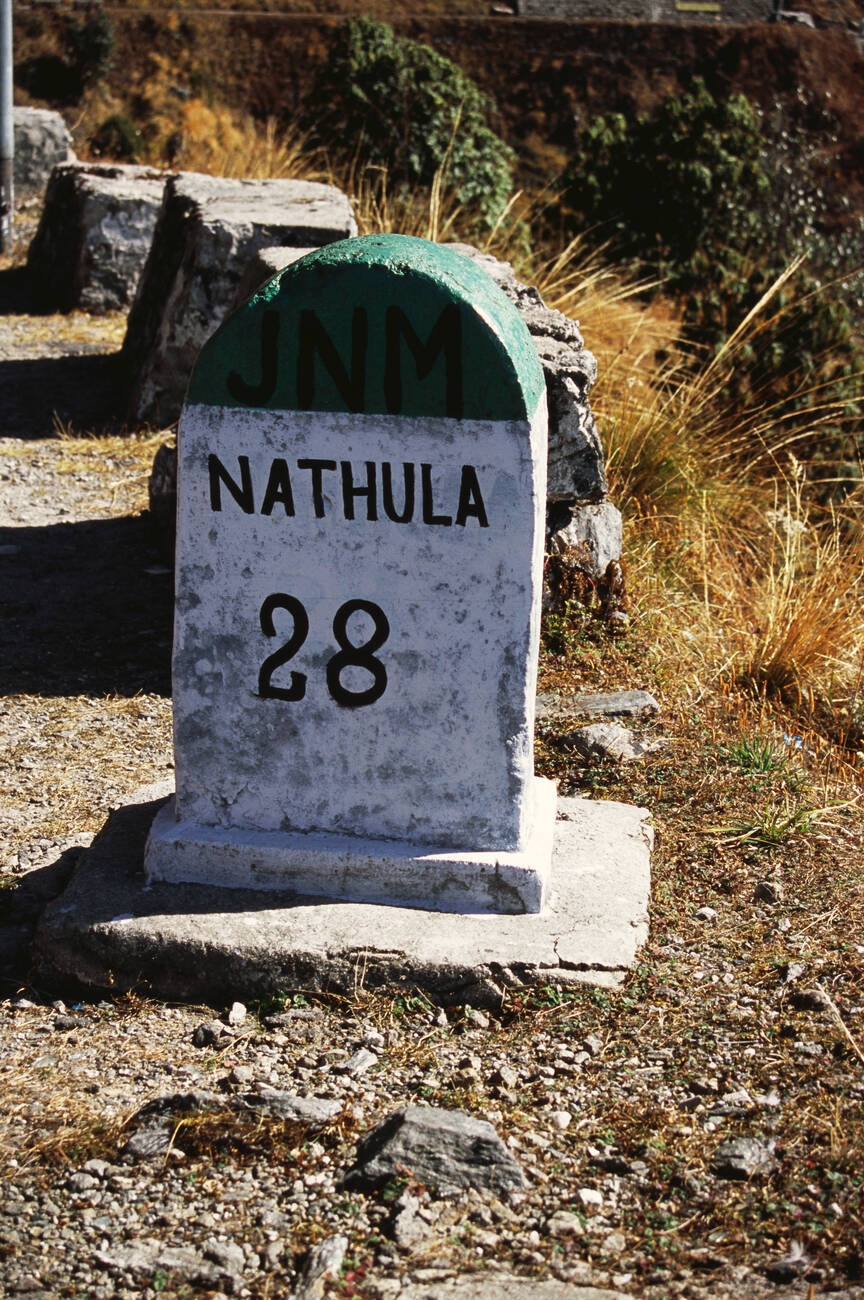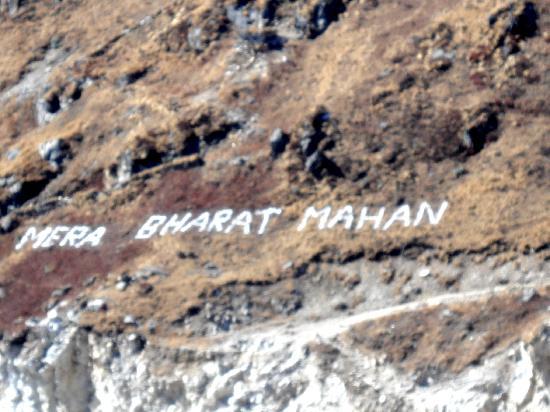Travel Guide to Nathula Pass To Plan A Perfect Trip In Sikkim
Are you thinking about a Sikkim Vacation? Why not plan a trip to Nathula Pass? This travel guide to Nathula Pass invites you to discover one of the most thrilling tourist spots of Nathula Pass. Whether you’re looking to explore places to visit in Sikkim or indulge in adventure activities in Sikkim, Nathula Pass offers an unforgettable experience.
This complete guide to Nathula Pass is your gateway to spectacular views and memorable adventures. From detailed insights to tips on how to make the most of your visit, this best travel guide to Nathula Pass promises an exciting journey.
Get ready to be amazed by the beauty and adventure that awaits you at Nathula Pass!
Overview

Nathula Pass is a special place high up in the mountains. This pass is a door between two countries, India and China, and has a rich history. Many years ago, it was a path where traders walked with their goods and animals. Today, it’s known for its stunning views and as a place where two different cultures meet.
This area is not just important for history; it’s also full of natural beauty. Imagine seeing snowy mountains, rare flowers, and maybe even some wildlife. People come here to see the beauty and feel the history all around them.
This guide to Nathula Pass will tell you all you need to know to visit this amazing place. It will be your complete guide to Nathula Pass, helping you discover the best spots to see and things to do. Whether you’re reading this as your travel guide to Nathula Pass or just to learn about tourist spots of Nathula Pass, you’ll find all the important details here to plan a memorable trip.
Suggested Read: 8 Places To Visit In Nathang Valley:Explore Off-Beat In Sikkim
History of Nathula Pass

Nathula Pass is a high mountain pass in the Himalayas, located between Sikkim in India and Tibet in China. This pass is not just a path over the mountains; it’s a bridge between two cultures and a witness to many historical events.
Long ago, this pass was part of the Old Silk Route. This route was like a big road where traders from different places would come to buy and sell things like silk, spices, and jewels. It was very busy and important because it connected different parts of Asia.
However, in 1959, things changed. There was a big problem in Tibet, and the leaders of China decided to close the pass. This meant no one could travel or trade through Nathula Pass for almost 40 years. It became quiet and forgotten.
Then, in 2003, a leader from India named Atal Bihari Vajpayee went to China to talk about opening the pass again. They all agreed, and in 2006, Nathula Pass opened once more. Now, it’s not just a place for traders but also a spot where soldiers from India and China meet to discuss and maintain peace.
Today, Nathula Pass is also famous for tourists. People come to see this historic pass and enjoy the beautiful views around it. Near the pass, there are other tourist attractions near Nathula Pass that tell more about the history and culture of this area. Visiting here is like stepping back in time, and there’s a lot to learn and see.
This guide to Nathula Pass includes stories and facts from the history of Nathula Pass. It shows how this place has seen trade, conflict, and friendship. It’s a reminder of how history shapes the places we visit.
Preparing for Your Trip to Nathula Pass

Travel Documents and Entry Requirements
Before planning your trip to Nathula Pass, it’s essential to know about the Nathula pass entry requirements. To visit Nathula Pass, you need a special permit because it is a border area between India and China. Indian tourists can obtain this permit through a registered travel agency in Sikkim. If you’re a foreign national, you’ll need to check with local authorities or travel agents as the rules can be different.
Make sure to carry valid identification, like a passport or an Indian voter ID, along with your permit. It’s important to arrange these documents well in advance to ensure your visit goes smoothly.
Health Precautions
When visiting high-altitude areas like Nathula Pass, it’s important to consider your health. Recommended vaccinations include those for tetanus and typhoid. Also, to help prevent altitude sickness, you might consider medicine to help you adjust to the high altitude. Staying hydrated and moving slowly to adjust to the altitude can also help.
Best Times to Visit
Choosing the right time to visit can make your experience much better. The best times to visit Nathula Pass are from May to October. During these months, the Nathula pass weather conditions are most favourable as the pass is clear of snow, and the temperature is relatively warmer, making it easier to travel and explore. Avoid the monsoon season from July to mid-September, as heavy rains can make the roads slippery and dangerous.
Things to Do in Sikkim
While you’re in the area, don’t miss out on other tourist spots of Nathula Pass and things to do in Sikkim. Sikkim is known for its beautiful monasteries, serene lakes, and vibrant local culture. You can also engage in various activities such as trekking, mountain biking, and bird watching.
Final Thought
Preparing for your visit to Nathula Pass is crucial for a smooth and enjoyable experience. This detailed travel guide to Nathula Pass aims to equip you with all the necessary information from Nathula pass entry requirements to the best travel times and local activities. By following this complete guide to Nathula Pass, you’ll be well on your way to a memorable adventure in one of Sikkim’s most iconic locations.
What to Expect – Weather and Terrain at Nathula Pass
Nathula Pass Weather Conditions
The weather at Nathula Pass can be quite unpredictable and changes with the seasons. During the summer months, from May to October, the weather is generally milder, with temperatures ranging from 10°C to 15°C. This is the best time for a trip to Nathula Pass as the paths are clear and the views are stunning. However, it can still get quite chilly, especially in the early mornings and evenings.
Winter at Nathula Pass is harsh, with temperatures often dropping below freezing, reaching as low as -20°C in January and February. The pass is usually covered in snow, which can be several feet deep, making it difficult and sometimes impossible to travel.
Clothing and Gear
Given the cold and variable weather conditions, it’s important to dress in layers when visiting Nathula Pass. Warm clothing is a must, regardless of the season. Essentials include a heavy jacket, thermal wear, gloves, and a woollen hat to protect against the cold. Waterproof boots and a raincoat are also important, as weather can change suddenly, bringing rain or snow.
If you’re planning to walk around and explore, sturdy hiking boots are essential for safe and comfortable movement across the terrain. Sunglasses and sunscreen are also recommended to protect against the sun’s rays, which can be quite harsh at high altitudes.
Remember, the key to a successful visit to this beautiful yet challenging terrain lies in preparation and understanding what to expect from the weather and landscape. By following this complete guide to Nathula Pass, you’ll be well-equipped to enjoy everything the area has to offer, making your journey not just safe but also memorable.
Planning Your Itinerary for a Trip to Nathula Pass

Day 1: Arrival and Preparation
- Arrive in Gangtok: Settle into your accommodation and prepare for the upcoming trip.
- Gather Information: Visit a local travel agency to confirm your permit for Nathula Pass. Remember, Nathula pass entry requirements must be arranged in advance as you cannot visit the pass without these permits.
- Briefing Session: Often, your tour guide or agency will offer a briefing session in the evening before the journey. This is covered in the visitors guide to Nathula Pass and will help you know what to expect.
Day 2: Journey to Nathula Pass
- Early Start: Begin your journey early in the morning from Gangtok to Nathula Pass. The drive takes about 3-4 hours.
- Scenic Stops: Stop at some tourist spots of Nathula Pass along the way, such as the beautiful Tsomgo Lake and the historic Baba Mandir.
- Arrive at Nathula: Explore the pass, taking in the stunning views and the rich history. Guides available on site can enhance your experience by providing a detailed travel guide to Nathula Pass.
Day 3: Exploring More and Return
- Morning Exploration: Spend another few hours in the morning revisiting any spots you missed or particularly enjoyed.
- Return to Gangtok: After lunch, begin your journey back to Gangtok.
- Evening at Leisure: Spend your evening relaxing or exploring local markets in Gangtok.
Day 4: Local Culture and Departure
- Explore Gangtok: Spend your last day exploring local attractions in Gangtok, like the Rumtek Monastery and Enchey Monastery, enriching your trip to Nathula Pass with cultural insights.
- Departure: Check out from your hotel and proceed to your next destination or back home.
This itinerary is designed as a complete guide to Nathula pass, aiming to provide a fulfilling experience of both Nathula Pass and the surrounding regions. By following this detailed travel guide to Nathula Pass, you’ll ensure a memorable and well-organised journey.
Suggested Read: Travel Guide To Plan A Perfect Sikkim Silk Route Trip
Top 5 Tourist Attractions in Nathula Pass
1. Baba Harbhajan Singh Mandir

Baba Harbhajan Singh Mandir is a revered site in Nathula Pass. This temple is dedicated to Baba Harbhajan Singh, a soldier who is believed to protect the soldiers in the area even after his death. People visit this temple to pay their respects and seek blessings. It’s a place filled with stories of loyalty and bravery. When visiting, it’s good to remember the local customs of respect and peace. This site is a must-see for anyone looking for spiritual experiences as part of their trip to Nathula Pass.
2. Mera Bharat Mahan Hill
Mera Bharat Mahan Hill offers one of the most patriotic sights along the border. This hill is marked by big, bold letters that read “Mera Bharat Mahan” which translates to “My India is Great.” From here, visitors can view the beautiful landscapes that surround the area. The hill is a perfect spot for taking photos and is often highlighted in the best travel guide to Nathula Pass as a place that fills visitors with pride and joy.
3. Staircase to Indo-China Border
The Staircase to the Indo-China Border is a literal set of steps that leads up to the border gate between India and China. It is a place of significant strategic importance but also offers visitors a unique opportunity to see an international boundary up close. Walking up these stairs is like walking through history, and it’s recommended in every detailed travel guide to Nathula Pass.
4. Tsomgo Lake

Tsomgo Lake, also known as Changu Lake, is a glacial lake located at a high altitude and is one of the most popular tourist spots of Nathula Pass. The lake is considered sacred by the local people and reflects different colours with each season. Visitors can enjoy a yak ride around the lake or simply soak in the tranquil beauty of the surroundings. Tsomgo Lake is a centrepiece in the guide to Nathula Pass for those seeking natural beauty.
5. Mandakini Waterfalls

Mandakini Waterfalls is a stunning natural site near Nathula Pass. The waterfall cascades down rugged cliffs, creating a spectacular view. It’s a perfect spot for nature lovers and photographers looking to capture the essence of Sikkim’s natural landscape. Visiting these waterfalls provides a refreshing break from the high-altitude trekking and is often listed in the visitors guide to Nathula Pass as a peaceful retreat.
Each of these attractions offers a unique experience, making them essential stops on your journey. Remember these tips for visiting Nathula Pass: wear comfortable shoes, carry water, and respect the natural and cultural sites you visit.
- Dress Appropriately: The weather at Nathula Pass can change quickly. Wear warm, layered clothing that you can adjust throughout the day. This tip is always highlighted in every guide to Nathula Pass because staying warm and comfortable is crucial at high altitudes.
- Carry Identification and Permits: Always have your identification and the necessary permits with you. This is essential, as mentioned in the best travel guide to Nathula Pass. Without the right documents, you might not be allowed to enter certain areas.
- Stay Hydrated: High altitudes can dehydrate you faster than usual. Drink plenty of water throughout your journey. Keeping hydrated is a vital tip for visiting Nathula Pass, helping prevent altitude sickness.
- Respect Local Customs: Nathula Pass is not just a tourist spot but a region with deep cultural significance. Show respect to local traditions and the environment. Respecting local customs is a responsible way to travel, as you will read in any guide to Nathula Pass.
- Explore Local Cuisine: Don’t miss trying local Sikkimese dishes. Places to eat in Sikkim offer a variety of foods that are both delicious and unique to the region.
- Shop Local: Places to shop in Sikkim include local markets where you can buy traditional handicrafts, woollens, and other souvenirs. Shopping locally supports the economy and allows you to bring home a piece of Sikkim.
- Plan Your Activities: There are many things to do in Sikkim. Whether it’s visiting monasteries, trekking through beautiful landscapes, or simply enjoying the calmness of the mountains, plan your activities according to your interests and physical ability.
- Use Local Guides: To get the most out of your visit, consider hiring local guides. They provide valuable insights and can enhance your understanding of the area. This is often recommended in every guide to Nathula Pass as it enriches your experience.
Conclusion:
In conclusion, Nathula Pass is a destination that promises adventure, beauty, and cultural enrichment. By following this guide to Nathula Pass, you’re not just preparing for a trip; you’re setting the stage for unforgettable memories in one of India’s most spectacular landscapes. Remember, every step you take in Nathula is a step through history and nature. So, pack your bags, follow these tips, and let this guide to Nathula Pass lead you to an extraordinary journey. Explore, enjoy, and embrace the wonders of Nathula Pass!
Where is Nathula Pass located?
Nathula Pass is located in the eastern part of Sikkim, India. It is a mountain pass in the Himalayas, connecting Sikkim with China’s Tibet Autonomous Region.
How do I reach Nathula Pass?
You can reach Nathula Pass by road from Gangtok, the capital of Sikkim. The drive takes about 3 to 4 hours. It’s recommended to hire a taxi or take a guided tour, as private vehicles need special permits to travel to Nathula.
What are the entry restrictions for Nathula Pass?
Entry to Nathula Pass is regulated by the Indian government. Indian tourists need a permit to visit, which can be arranged through a registered travel agency in Sikkim. Foreign nationals are currently not allowed to visit Nathula Pass.
What are the attractions near Nathula Pass?
Near Nathula Pass, you can visit several attractions like Tsomgo Lake, Baba Harbhajan Singh Mandir, and Mera Bharat Mahan Hill. These sites offer stunning natural beauty and fascinating history.
Can I go to Nathula Pass in my own car?
Yes, you can go to Nathula Pass in your own car, but you need to obtain a special permit first. These permits are available through registered travel agencies in Sikkim. Due to the challenging road conditions and altitude, it’s important to make sure your vehicle is well-maintained and equipped for mountain driving.








